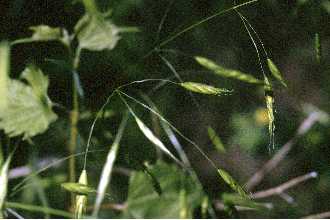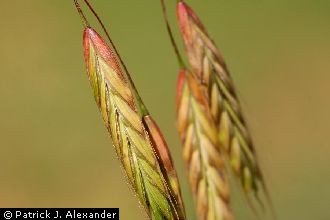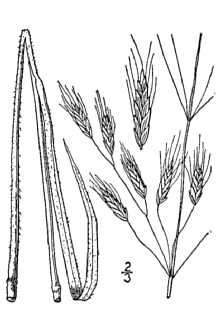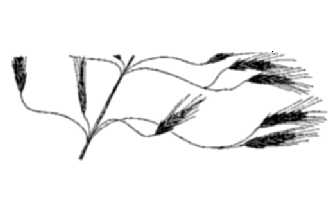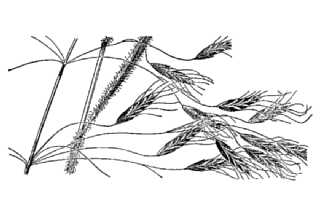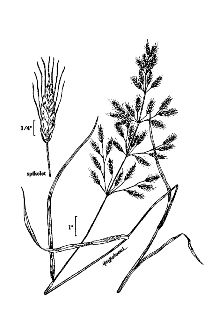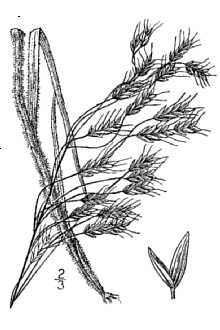Bromus japonicus Thunb. var. porrectus Hack.
Scientific Name: Bromus japonicus Thunb. var. porrectus Hack.
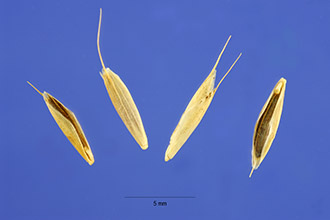
| General Information | |
|---|---|
| Usda Symbol | BRJAP |
| Group | Monocot |
| Life Cycle | Annual |
| Growth Habits | Graminoid |
| Native Locations | BRJAP |
Plant Guide
Use soil moisture sensors to measure the soil moisture of Bromus japonicus Thunb. var. porrectus Hack..
Fact Sheet
Uses
Field brome is used primarily as a winter cover crop on vegetable lands and in orchards in the Northeast, Due to its heavy root growth and low, dense top growth, it gives good protection against wind and water erosion, The heavy root growth makes it a useful green manure crop, When used as a cover plant, it provides good pasturage for Canada geese, especially in the spring, , Use soil moisture sensors to measure the soil moisture of Bromus japonicus Thunb. var. porrectus Hack..
Status
Please consult the PLANTS Web site and your State Department of Natural Resources for this plant’s current status (e.g. threatened or endangered species, state noxious status, and wetland indicator values).
Weediness
This plant may become weedy or invasive in some regions or habitats and may displace desirable vegetation if not properly managed. Please consult with your local NRCS Field Office, Cooperative Extension Service office, or state natural resource or agriculture department regarding its status and use. Weed information is also available from the PLANTS Web site at plants.usda.gov.
Description
Field brome is a winter annual. It produces dense, low leafy growth in the fall. Spring growth starts earlier than most other annual grasses used for cover crops. It does not have creeping stolons or rhizomes, but tillers profusely. It produces seedheads in late spring or early summer. Seed stalks are 2 to 3 feet tall. The principal characteristics that make it an outstanding cover crop are the extensive fiberous root system and the relatively short top growth. It is winter hardy in northeast and north central regions. It grows vigorously under high fertility and often smothers other grasses or weeds. It is an excellent seed producer and can maintain itself as a reseeding annual. There are 250,000 seeds per pound.
Adaptation
Field brome does best on medium textured soils that are moderately well-drained to well-drained. It has done well in lowlands subject to flooding and on sloping, gravelly soils. The most suitable pH range is between 6.0 and 7.0. Field brome can be found throughout the United States. For a current distribution map, please consult the Plant Profile page for this species on the PLANTS Website.
Establishment
The best seeding date for field brome is mid-August in the North to early September in the South. When used as a cover crop in cropland, field brome is usually seeded at the time of the last cultivation. Field brome should be seeded for orchard cover on a firm seedbed. Seeding rate is 10 pounds per acre. Rolling, cultipacking, or cultivating after broadcast seeding is essential for a uniform stand. Field brome is a heavy user of nitrogen and best growth is produced when nitrogen is available. The light, fluffy seed of field brome may cause some planting difficulties. The seed is best applied using a power driven cyclone type seeder with an agitator. A cultipacker seeder or a grain drill with a positive type feed may be used for planting.
Management
Nitrogen application is not essential for cover crop use, but supplemental nitrogen may be added to
Plant Traits
Growth Requirements
| Temperature, Minimum (°F) | -23 |
|---|---|
| Adapted to Coarse Textured Soils | No |
| Adapted to Fine Textured Soils | Yes |
| Adapted to Medium Textured Soils | Yes |
| Anaerobic Tolerance | None |
| CaCO3 Tolerance | Low |
| Cold Stratification Required | No |
| Drought Tolerance | Low |
| Fertility Requirement | Medium |
| Fire Tolerance | None |
| Frost Free Days, Minimum | 120 |
| Hedge Tolerance | None |
| Moisture Use | Medium |
| pH, Maximum | 7.5 |
| pH, Minimum | 5.2 |
| Precipitation, Maximum | 55 |
| Precipitation, Minimum | 26 |
| Root Depth, Minimum (inches) | 12 |
| Salinity Tolerance | None |
| Shade Tolerance | Intolerant |
Morphology/Physiology
| Bloat | None |
|---|---|
| Toxicity | None |
| Resprout Ability | No |
| Shape and Orientation | Erect |
| Active Growth Period | Fall, Winter and Spring |
| C:N Ratio | Low |
| Coppice Potential | No |
| Fall Conspicuous | No |
| Fire Resistant | No |
| Flower Color | Yellow |
| Flower Conspicuous | No |
| Foliage Color | Green |
| Foliage Porosity Summer | Moderate |
| Foliage Porosity Winter | Porous |
| Fruit/Seed Color | Brown |
| Nitrogen Fixation | None |
| Low Growing Grass | No |
| Leaf Retention | No |
| Known Allelopath | No |
| Height, Mature (feet) | 3.0 |
| Growth Rate | Rapid |
| Growth Form | Bunch |
| Fruit/Seed Conspicuous | No |
| Foliage Texture | Medium |
Reproduction
| Vegetative Spread Rate | None |
|---|---|
| Small Grain | No |
| Seedling Vigor | High |
| Seed Spread Rate | Rapid |
| Propagated by Bare Root | No |
| Seed per Pound | 280000 |
| Propagated by Tubers | No |
| Propagated by Sprigs | No |
| Propagated by Sod | No |
| Propagated by Cuttings | No |
| Propagated by Corm | No |
| Propagated by Container | No |
| Propagated by Bulb | No |
| Fruit/Seed Persistence | No |
| Fruit/Seed Abundance | High |
| Commercial Availability | No Known Source |
| Bloom Period | Mid Spring |
| Propagated by Seed | Yes |
Suitability/Use
| Veneer Product | No |
|---|---|
| Pulpwood Product | No |
| Protein Potential | Low |
| Post Product | No |
| Palatable Human | No |
| Palatable Graze Animal | Low |
| Palatable Browse Animal | Medium |
| Nursery Stock Product | No |
| Naval Store Product | No |
| Lumber Product | No |
| Fodder Product | No |
| Christmas Tree Product | No |
| Berry/Nut/Seed Product | No |

